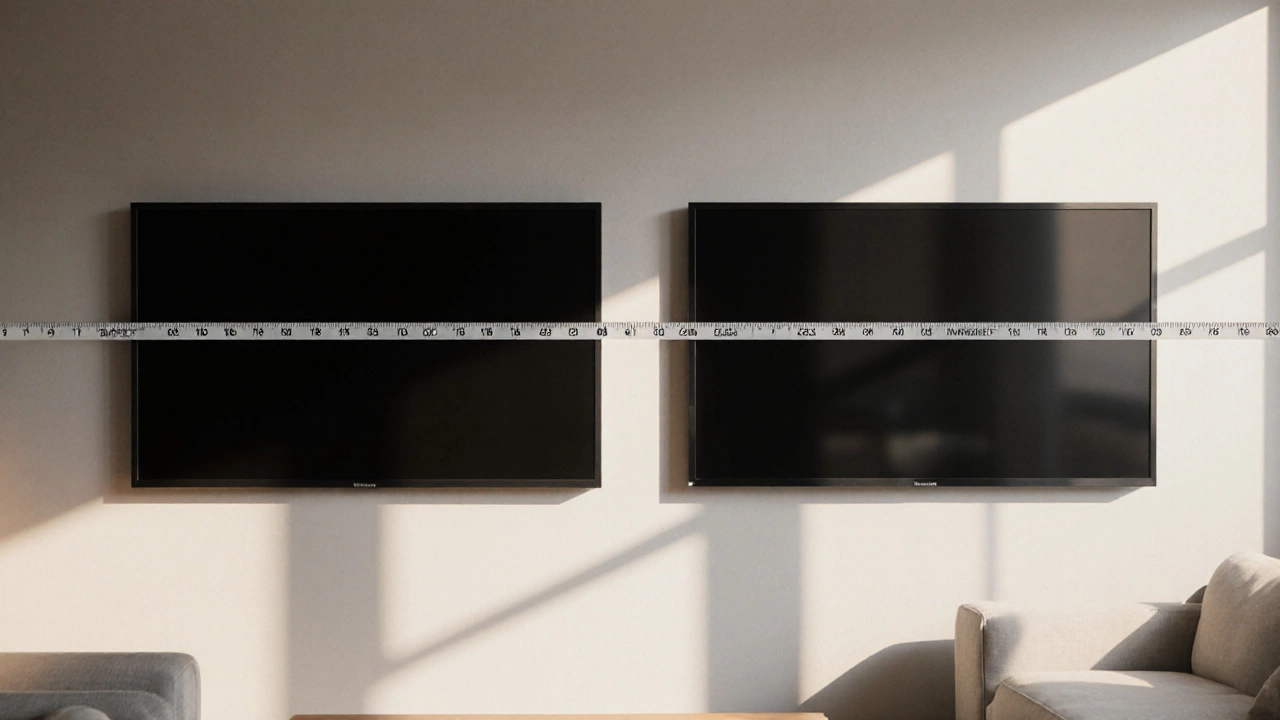65 Inch TV Size: What You Need to Know Before You Buy
When you’re shopping for a 65 inch TV size, a common screen diagonal measurement used in modern home theaters and living rooms. Also known as a 65-inch display, it’s one of the most popular sizes for balancing immersive viewing without overwhelming smaller spaces. But size alone doesn’t tell the whole story. A 65 inch TV isn’t just about the screen—it’s about how it fits in your room, what you put it on, and how far you sit from it. Get this wrong, and you’ll end up with a TV that feels too big, too small, or just plain awkward.
The TV stand size, the width and depth of the furniture holding your TV. Also known as a TV console, it needs to be wide enough to safely hold a 65 inch TV without overhanging dangerously. Most 65 inch TVs are around 57 inches wide, so your stand should be at least 60 inches across. Too narrow, and you risk tipping. Too wide, and it looks out of place. Then there’s the TV wall mount height, the ideal vertical position for your TV when mounted on the wall. Also known as eye-level mounting, it’s not about centering the TV on the wall—it’s about centering it on your eyes when seated. For most couches, that’s 40 to 48 inches from the floor to the center of the screen. Mount it too high, and you’ll strain your neck. Too low, and you’ll feel like you’re watching from a basement.
And don’t forget the TV viewing distance, how far you should sit from the screen for the best picture quality and comfort. Also known as optimal viewing range, it’s not just about feeling surrounded by the image—it’s about avoiding pixelation and eye fatigue. For a 65 inch TV, the sweet spot is between 8 and 10 feet. Sit closer than 7 feet, and you’ll start seeing individual pixels. Sit farther than 12 feet, and you’re wasting the screen’s detail. This isn’t guesswork—it’s math based on screen resolution and human vision.
These aren’t just tips—they’re the basics that separate a good setup from a frustrating one. People buy 65 inch TVs because they want that cinema feel, but too many skip the planning and end up with a TV that doesn’t fit their space, their couch, or their eyes. The posts below cover exactly these kinds of real-world problems: how to pick the right stand, whether to wall-mount or use a console, what happens if you sit too close, and how to avoid the mistakes most buyers make. You’ll find advice on TV stands for 55 inch TVs, why wall-mounting isn’t always better, and how to place your TV so it looks right and feels right. No fluff. No theory. Just what works in actual homes.
65‑inch TV vs 60‑inch TV: Size Difference Explained
Find out exactly how much bigger a 65‑inch TV is than a 60‑inch model, see the width and height differences, and learn which TV stand fits each size perfectly.
View more